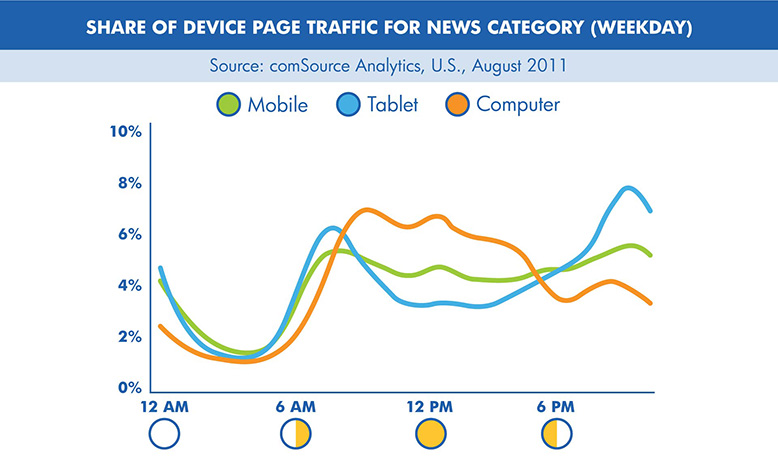Mobile devices play a vital role in our daily lives. When waking up, getting to work, or even enjoying leisure time at home, we’re constantly reaching for a device - whether it be a smartphone or tablet. Here are some interesting findings on how we’re using mobile devices.
Time Of Day Matters
People aren’t just using one device for all their needs, but instead are turning to multiple throughout their day to consume content. In a study conducted by ComScore, it was found out that we turn to different devices depending on the time of day (Source: ComScore)

Peak activity for smartphone usage is at the start of the day and during commute. During the day, we move to a PC (likely because we’re at work), and the evening sees tablet usage at its peak, with many users reaching for their tablet for entertainment. So, it becomes even more critical to think about your message across these different devices so that users can engage with your brand throughout their day.
Different Devices, Different Uses
In a study conducted by the Interactive Advertising Bureau (IAB), it was found that mobile users aren’t using the same device for everything: smartphones and tablets offer different value in the eyes of users. Smartphones are seen as vital pieces of everyday life:70% of respondents reported that they wouldn’t leave their home without theirs, and only 5% of users noted that their smartphones had a disruptive impact on their lives. Tablets, on the other hand, are seen as entertainment devices: 68% of tablet users reported using their tablet for entertainment, regardless of location. In addition, 77% of respondents reported interacting with ads on their tablet, while only 53% reported doing the same on their smartphone.
Behaviour Differences Depending On Operating System Preferences
In the same study, the IAB found that users responded to ads differently depending on their device preference. For example, Apple users were found to be more receptive to ads related to their location than Android users. They also showed more engagement with advertising and a higher propensity for on-device purchases than Android users.
Devices Are Changing Traditional Media Consumption
Although both smartphones and tablets have changed the way we consume traditional media such as print and TV, tablets have also resulted in an even more significant change: close to a third of respondents reported reading less print and almost a quarter reported watching less TV because they were viewing content on their tablet.
Mobile users aren’t just using one device to satisfy all their needs. They see a distinction between smartphones and tablets and their behaviour is further segmented depending on the operating system they’re using. Each type of device also has a certain ideal time for use depending on its perceived value. Understanding consumer behaviour across devices is key when considering what platforms and devices to support and figuring out how users will be most receptive to your brand messaging.






